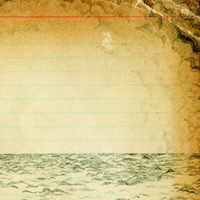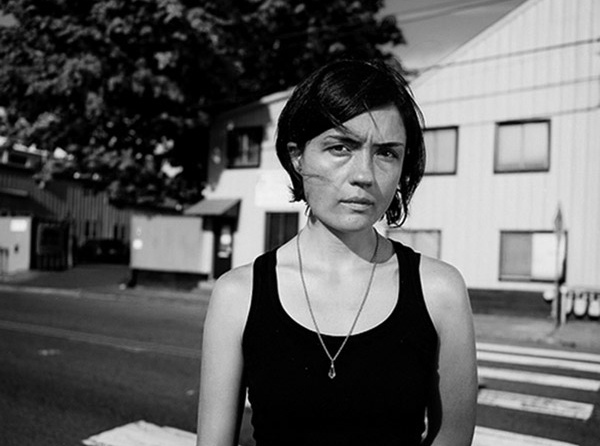 Liz Harris: Divide (Root Strata, 2010)
Liz Harris: Divide (Root Strata, 2010)
When a contemporary artist creates with the basic ideas of darkness, light, and nature in mind, the results can be bewitching and intriguing on a very primal level. These concepts can yield wonderful images and sounds in capable hands. Such is the case with Liz Harris, better known as Grouper.
Harris has been experimenting with the mediums of video, sound, and illustrations since 2005, with the release of her self-titled CD-R, Grouper. She also has enjoyed success with albums on myriad labels, including Root Strata, Weird Forest, and Type Records. Because these limited-pressing CDs and LPs come and go so quickly, there have been three pressings of her last full-length, Dragging a Dead Deer Up a Hill (the last of which was released on Harris’ own label, the simply named Grouper).
With Harris’ most recent contribution, Divide, she combines her own personal drawings and a DVD of augmented, aquatic imagery for a celebration of life’s abstract wonders. For those not familiar with Grouper or Liz Harris, her brand of oceanic and hypnotizing art is absolutely unique. In the following conversation, we get a rare glimpse behind the multi-layered black curtain that is her craft, as well as some insight into her new book.
What was your inspiration for your recent book of drawings?
I started making art in this style about six or seven years ago, at the same time that I started making music as Grouper (the first piece I made was for the Way Their Crept insert). A desire to escape from anxiety definitely guided the trajectory of both. I feel, as with music, that I often understand the nature of a piece after it is done. The initial concept is intuitive, autonomous, and outside.
What I’ve learned about the pieces in Divide, by observation, is that they talk about gateways across various separations — between people, within various elements of one’s own character. I feel invested in questioning the permanence perceived in certain boundaries, in regards to space, and to [the] nature of our selves. The idea that these items are flexible is terrifying and mesmerizing.
I have a strong urge, like a lot of people, to make things black and white, to make sense of what frustrates or frightens me, make it fit in to a grid. Making patterns feels like a way to unwind knots, like picking the way through a labyrinth. What I most enjoy in them is that they give me that satisfaction of finding an order in things, while reminding me of the impossibility/absurdity of that task, all at once — a pattern that unfolds and changes to incorporate its own flaws.

